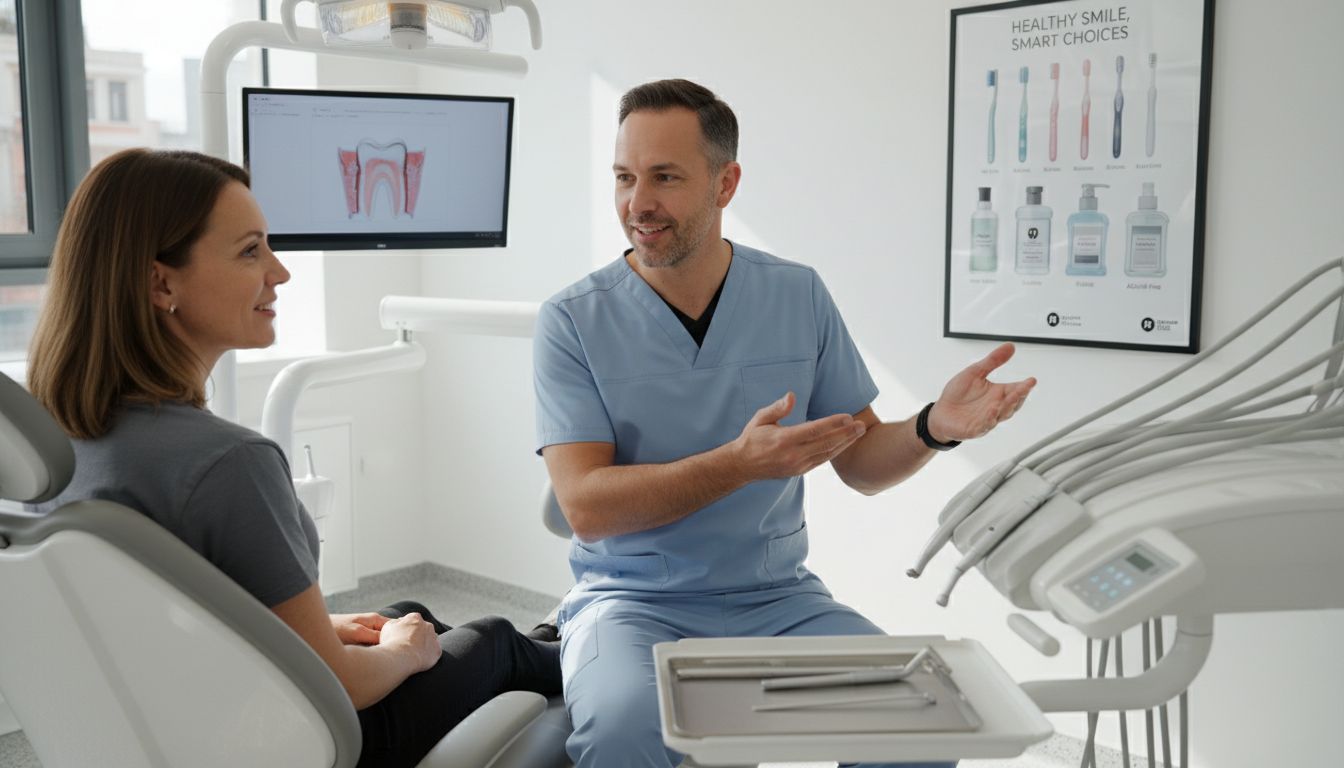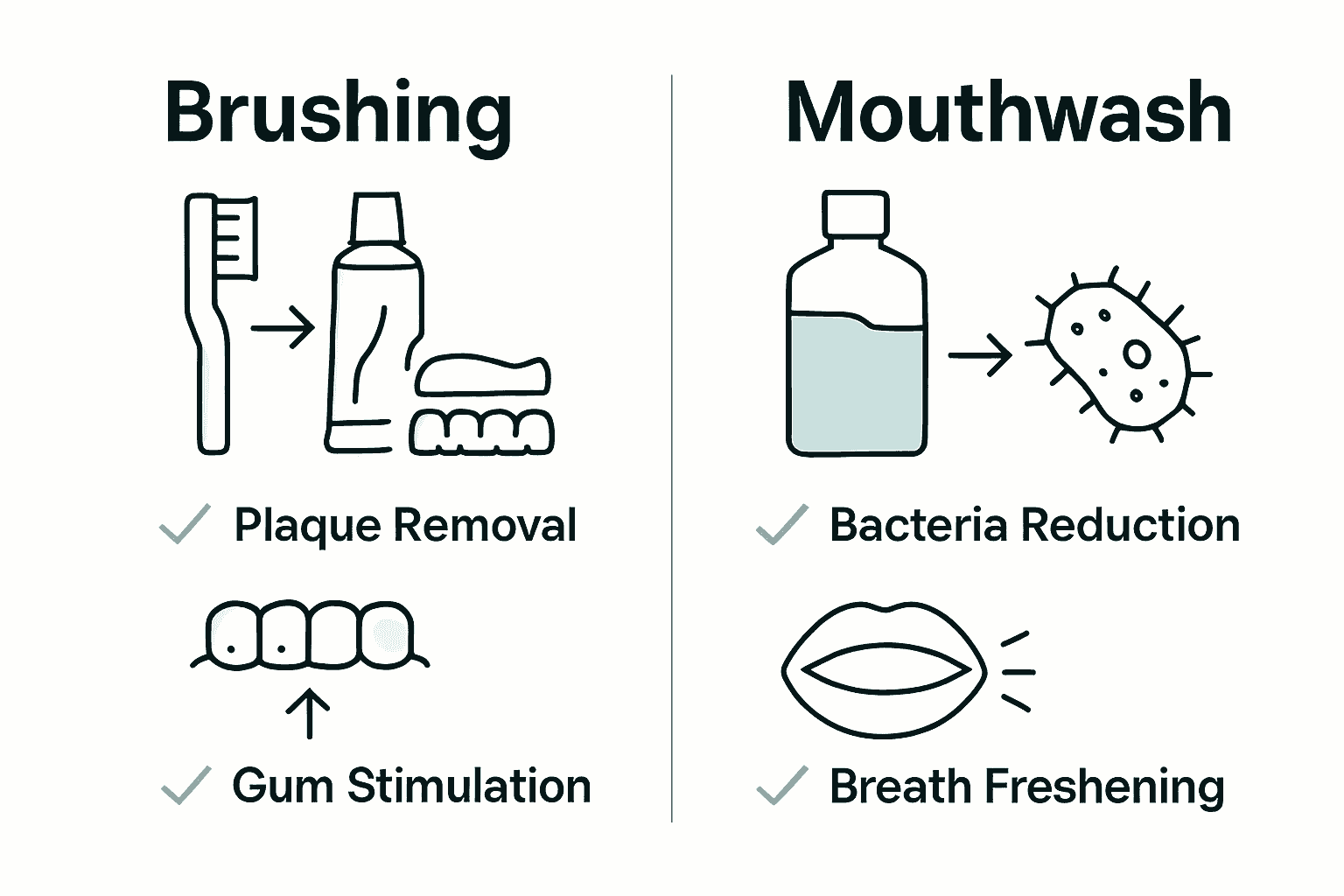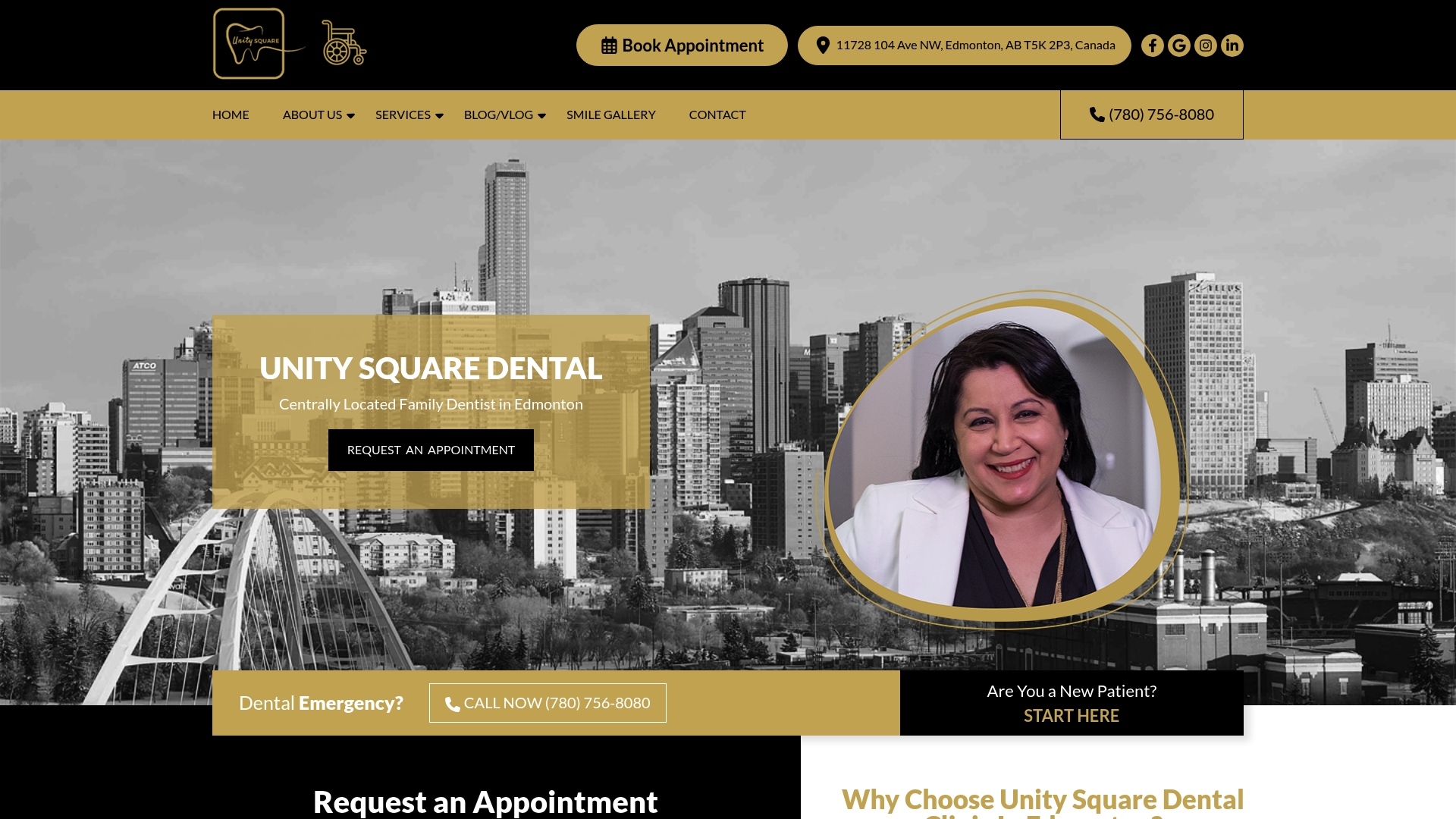
Nearly everyone knows brushing teeth is vital, yet over 30 percent of adults still skip it at least once a day. Good oral hygiene goes beyond just brushing and involves understanding how mouthwash and brushing work together to keep your mouth healthy. With so much conflicting advice about dental routines, knowing the distinct roles of each method can help you make smarter choices for your teeth and gums.
Table of Contents
- What Mouthwash And Brushing Are
- Differences In Function And Effectiveness
- Best Routine Sequence And Usage Tips
- Health Risks And Safety Considerations
- When To Choose What (Use Cases)
Key Takeaways
| Point | Details |
|---|---|
| Effective Oral Hygiene Combination | Tooth brushing and mouthwash serve distinct yet complementary roles in dental care, maximizing oral health when used together. |
| Routine Timing is Crucial | Brush teeth twice daily and use mouthwash at a different time to preserve fluoride benefits from toothpaste. |
| Choose Safety-Conscious Products | Opt for alcohol-free mouthwash and soft-bristle brushes to reduce health risks associated with dental care. |
| Adapt Strategy Based on Needs | Tailor oral care practices based on personal circumstances or dental conditions, such as using mouthwash for braces. |
What mouthwash and brushing are
In the world of oral hygiene, tooth brushing and mouthwash represent two fundamental practices designed to maintain dental health and prevent potential complications. According to Wikipedia, tooth brushing is the essential practice of cleaning teeth using a toothbrush and toothpaste to systematically remove dental plaque and food particles that can lead to cavities and gum disease.
Mouthwash, alternatively known as mouth rinse, serves as a complementary liquid solution in oral care. Wikipedia defines it as a specialized liquid used to rinse the mouth with multiple objectives: reducing oral bacteria, providing fresh breath, and delivering targeted therapeutic agents directly to teeth and gums. Unlike tooth brushing, which mechanically removes debris, mouthwash works chemically to supplement regular dental cleaning.
The primary goals of both practices are interconnected yet distinct:
-
Tooth Brushing Goals:
- Mechanical removal of plaque
- Prevention of tooth decay
- Stimulation of gum health
- Elimination of food particles
-
Mouthwash Goals:
- Chemical reduction of bacteria
- Freshening breath
- Delivering therapeutic compounds
- Reaching areas toothbrushes cannot
For those seeking a comprehensive understanding of maintaining optimal oral hygiene, check out our dental hygiene checklist guide that provides detailed insights into effective dental care routines.
Differences in function and effectiveness
Toothbrushing and mouthwash play distinctive yet complementary roles in oral hygiene, each addressing different aspects of dental health. According to National Center for Biotechnology Information, combining toothbrushing with an antimicrobial mouthrinse can result in significantly greater reductions in oral bacteria and improvements in gingival health compared to toothbrushing alone.
Wikipedia highlights a crucial difference: while toothbrushing effectively removes plaque from tooth surfaces through mechanical action, mouthwash can reach areas that brushing might miss, offering additional antimicrobial benefits and breath freshening. This complementary approach means that neither method is entirely superior, but rather they work best when used together.

Key functional differences include:

-
Mechanical vs. Chemical Cleaning:
- Toothbrushing: Physical removal of plaque
- Mouthwash: Chemical reduction of bacteria
-
Coverage Areas:
- Toothbrush: Direct surface cleaning
- Mouthwash: Reaches between teeth and hard-to-brush areas
-
Specific Benefits:
- Toothbrushing: Removes solid particles
- Mouthwash: Kills bacteria, freshens breath
To understand how to optimize your oral hygiene routine, explore our dental hygiene checklist guide for comprehensive insights into effective dental care strategies.
Best routine sequence and usage tips
Oral hygiene requires strategic planning to maximize the benefits of both tooth brushing and mouthwash. Wikipedia recommends brushing teeth twice daily for two minutes each time, using proper technique to ensure effective plaque removal and maintain optimal oral health. The key is consistency and precision in your approach.
Wikipedia offers a crucial insight about timing: it is recommended to use mouthwash at a different time of day than brushing to avoid washing away the beneficial fluoride residue left by toothpaste. This strategic separation ensures that you receive the maximum protective benefits from both oral care methods.
Here’s an ideal daily oral hygiene sequence:
-
Morning Routine:
- Brush teeth for 2 minutes
- Use fluoride toothpaste
- Rinse thoroughly
-
Evening Routine:
- Use antiseptic mouthwash
- Swish for recommended time (usually 30-60 seconds)
- Spit out completely
Pro Tips:
- Wait 30 minutes after brushing before using mouthwash
- Choose alcohol-free mouthwash for sensitive mouths
- Use mouthwash that targets your specific dental needs
For a comprehensive breakdown of maintaining exceptional oral hygiene, review our 10 essential steps for oral hygiene checklist to ensure you’re covering all your dental care bases.
Health risks and safety considerations
Oral care techniques can pose unexpected health risks if not performed correctly. Wikipedia warns that some mouthwashes contain high levels of alcohol, which can cause oral dryness and irritation, and excessive use may potentially be linked to an increased risk of oral cancer. This underscores the importance of choosing mouthwash carefully and using it in moderation.
Wikipedia highlights another critical safety concern: overly vigorous or incorrect toothbrushing can lead to serious dental damage. Aggressive brushing techniques may result in gum recession, enamel wear, and increased tooth sensitivity. The recommended approach is to use a soft-bristled brush and apply gentle, consistent technique to protect your oral health.
Key safety considerations for oral hygiene include:
-
Mouthwash Safety:
- Limit alcohol-based mouthwash use
- Choose alcohol-free alternatives
- Avoid swallowing mouthwash
-
Toothbrushing Precautions:
- Use soft-bristled brushes
- Apply gentle pressure
- Replace toothbrush every 3-4 months
Warning Signs to Watch:
- Bleeding gums
- Increased tooth sensitivity
- Persistent mouth dryness
- Unusual oral discomfort after brushing or rinsing
For personalized guidance on maintaining safe and effective oral hygiene, check out our how often to brush teeth naturally guide to ensure you’re protecting your dental health.
When to choose what (use cases)
Oral care strategies vary depending on individual dental needs and specific health conditions. Wikipedia highlights that individuals with orthodontic appliances or limited dexterity can particularly benefit from incorporating mouthwash into their routine, as it helps reduce plaque in areas that are challenging to clean with a traditional toothbrush.
Wikipedia emphasizes that while toothbrushing remains fundamental for removing plaque and preventing cavities, certain dental conditions might require more specialized approaches. In cases of severe gum disease, for instance, dentists may recommend additional treatments like antimicrobial mouthwashes to support overall oral health.
Use cases for choosing between mouthwash and brushing include:
-
Toothbrushing Recommended When:
- Daily plaque removal is needed
- Food particles require mechanical cleaning
- Fluoride application is necessary
-
Mouthwash Preferred In These Scenarios:
- Braces or dental work make brushing difficult
- Reaching tight spaces between teeth
- Addressing specific oral health concerns
Special Circumstance Recommendations:
- Limited hand mobility
- Orthodontic treatments
- Post-surgical oral care
- Persistent bad breath
For personalized guidance tailored to your unique dental needs, explore our dental hygiene checklist to understand the most effective oral care approach.
Discover the Best Oral Care Routine for Your Smile
Choosing between mouthwash and brushing is more than a daily habit it is essential to your overall dental health. If you struggle to decide how to combine these two powerful oral hygiene steps to effectively fight plaque, freshen breath, and protect your gums you are not alone. Many face challenges like avoiding gum irritation, knowing the right timing to use mouthwash, and mastering brushing techniques without causing sensitivity or enamel wear.
Unity Square Dental understands these concerns and offers expert guidance tailored to your unique needs. With advanced dental technology and personalized care, our Edmonton clinic ensures you get the most from your dental routine. Whether you need advice on selecting the right mouthwash, brushing properly, or managing special conditions like braces or sensitive gums explore our dental hygiene checklist and related resources to empower your daily habits.

Ready to unlock a healthier smile with the perfect balance of brushing and mouthwash? Visit Unity Square Dental today to schedule your consultation and receive professional oral care tailored just for you. Don’t wait to protect your smile with expert support—start your journey to optimal oral health now by checking out our 10 essential steps for oral hygiene checklist and book your appointment with us.
Frequently Asked Questions
What are the main differences between mouthwash and brushing?
Tooth brushing mechanically removes plaque and food particles from teeth, while mouthwash chemically reduces oral bacteria and freshens breath. Both practices complement each other for optimal oral hygiene.
How should I incorporate mouthwash into my oral care routine?
It’s best to use mouthwash at a different time than brushing to avoid washing away the fluoride from your toothpaste. A common recommendation is to brush your teeth in the morning and use mouthwash in the evening.
Can mouthwash replace brushing my teeth?
No, mouthwash cannot replace brushing. While it can provide additional benefits such as killing bacteria and freshening breath, it does not remove plaque or food particles as effectively as brushing does.
What precautions should I take when using mouthwash?
When using mouthwash, limit the use of alcohol-based options, choose alcohol-free alternatives if you have a sensitive mouth, and avoid swallowing it. Always follow the manufacturer’s instructions for proper usage.
Recommended
- Understanding How Often to Brush Teeth for Optimal Health – Unity Square Dental
- Choosing the Right Toothbrush for Your Family’s Needs – Unity Square Dental
- 7 Must-Have Steps for Your Essential Dental Hygiene Checklist – Unity Square Dental
- 10 Essential Steps for Your Oral Hygiene Checklist – Unity Square Dental

